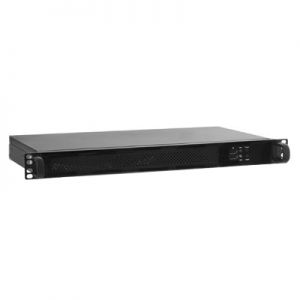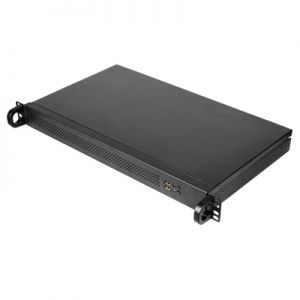1U Rackmount Computer
Explore the power and versatility of Acnodes' 1U rackmount computers, ideal for space-constrained environments such as data centers and industrial automation settings. These compact yet high-performance systems are specifically engineered to seamlessly integrate into standard 19-inch server racks, boasting the latest Intel processors for unparalleled processing capabilities. Despite their small footprint, Acnodes' 1U rackmount computers deliver exceptional performance and scalability. Equipped with multiple storage bays and PCI/PCIe expansion slots, these systems ensure flexibility to meet evolving needs. Plus, their front-accessible components make maintenance a breeze. Acnodes' 1U rackmount computers stand out for their robust features and unwavering reliability, making them the ultimate solution for organizations requiring powerful computing in a compact form factor. Explore our range today to enhance your infrastructure with space-saving efficiency and uncompromised performance.
1U Rackmount Computer
Rackmount computers maximizing productivity while offering high-performance systems and long term reliability. The system utilizes the Intel Core i CPU or Xeon E3-1230 V6 CPU with LAN, VGA, HDMI, DVI, USB, and multiple drive bays. The 1U high space-saving enclosure varies from 9.84-inches in depth up to 22-inches in depth. These 1U rackmount computers are ideal for industrial computing applications and space-constrained environments.
-
- 1U high 9.9 inch depth rackmount computer
- Intel Core i7-6700 3.4GHz CPU with Q170 chipset
- Supports DDR4 memory (up to 32GB)
- 2 x 2.5-inch SATA storage bays
- 2 x COM, Dual LAN, 6 x USB 3.0, 1 x DVI-D, 1 x HDMI, 1 x DP
- 1 x PCI-E 3.0 x 16 expansion slot (full height)
- 3 x 40x40x20mm 7000RPM 8CFM fans
- 1U 200W FlexATX power supply
-
- 1U high 9.9 inch depth rackmount computer
- Intel Core i7-10700 3.4GHz CPU with H410 chipset
- Supports DDR4 memory (up to 32GB total)
- 2 x 2.5-inch SATA storage bays
- Supports M.2 SSD storage
- 4 x COM, 2 x GbE LAN, 6 x USB, 1 x DP, 1 x HDMI
- 1 x PCI-E x16 Riser Card (full height)
- 3 x 4020 7000RPM 8CFM fans
- 1U 250W FLEX ATX power supply
REFERENCES
What is a PCIe Expansion Slot?
PCI Express (PCIe) is a standard interface that connects peripheral components or add-on cards to the motherboard. PCIe can also be described as a standard for connecting devices to computers. The internal structural design of PCIe is a lot like a local area network in that each link goes a central hub in the computer that performs network-like switching. When the PCIe card is installed, a connection or link is formed between the PCIe device and the system. The link is constructed around a bi-directional serial point-to-point connection called a “lane”. A link can use more than one lane at a time by all links compliant with the PCIe specification, but must minimally support single-lane connections, known as “x1” links. For greater potential bandwidth, PCIe devices and systems have the option to support links using multiple simultaneous lanes. The size of a PCIe card is determined by the number of lanes. There are four sizes: x1, x4, x8, and x16. The number "x" refers to how many lanes there are in a PCIe slot. For example, a PCIe x 16 means that the card slot has 16 lanes. PCIe slots can be used to add GPU cards, RAID cards, Wi-Fi cards, and SSD cards.
What is a PCIe Expansion Slot?
PCI Express (PCIe) is a standard interface that connects peripheral components or add-on cards to the motherboard. PCIe can also be described as a standard for connecting devices to computers. The internal structural design of PCIe is a lot like a local area network in that each link goes a central hub in the computer that performs network-like switching. When the PCIe card is installed, a connection or link is formed between the PCIe device and the system. The link is constructed around a bi-directional serial point-to-point connection called a “lane”. A link can use more than one lane at a time by all links compliant with the PCIe specification, but must minimally support single-lane connections, known as “x1” links. For greater potential bandwidth, PCIe devices and systems have the option to support links using multiple simultaneous lanes. The size of a PCIe card is determined by the number of lanes. There are four sizes: x1, x4, x8, and x16. The number "x" refers to how many lanes there are in a PCIe slot. For example, a PCIe x 16 means that the card slot has 16 lanes. PCIe slots can be used to add GPU cards, RAID cards, Wi-Fi cards, and SSD cards.







